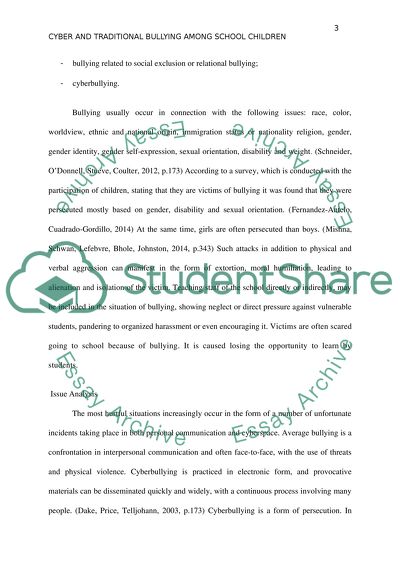Cite this document
(“Cyber and Traditional Bullying Among School Children Research Paper”, n.d.)
Retrieved from https://studentshare.org/psychology/1700912-cyber-and-traditional-bullying-among-school-children-countermeasures
Retrieved from https://studentshare.org/psychology/1700912-cyber-and-traditional-bullying-among-school-children-countermeasures
(Cyber and Traditional Bullying Among School Children Research Paper)
https://studentshare.org/psychology/1700912-cyber-and-traditional-bullying-among-school-children-countermeasures.
https://studentshare.org/psychology/1700912-cyber-and-traditional-bullying-among-school-children-countermeasures.
“Cyber and Traditional Bullying Among School Children Research Paper”, n.d. https://studentshare.org/psychology/1700912-cyber-and-traditional-bullying-among-school-children-countermeasures.


